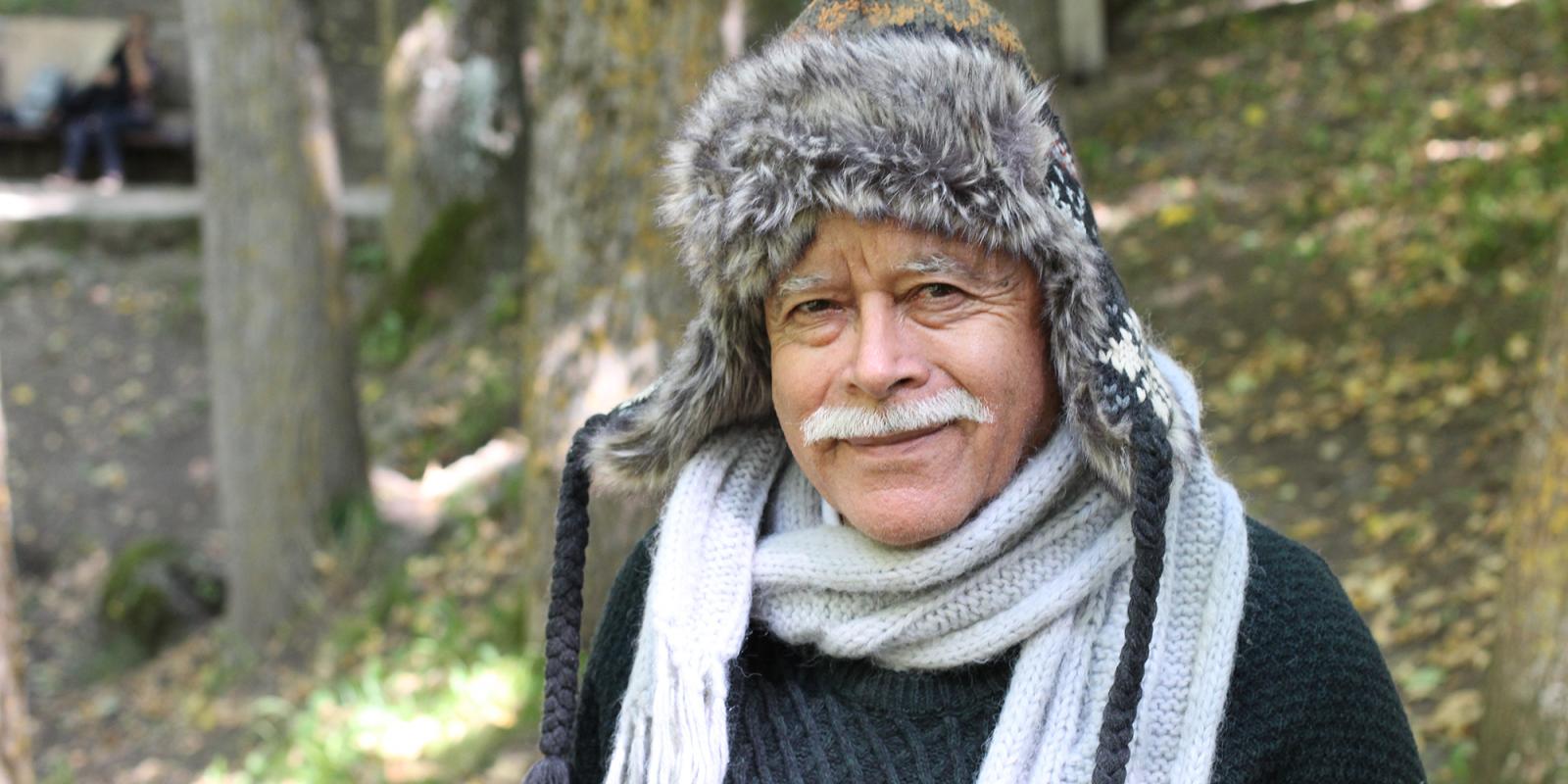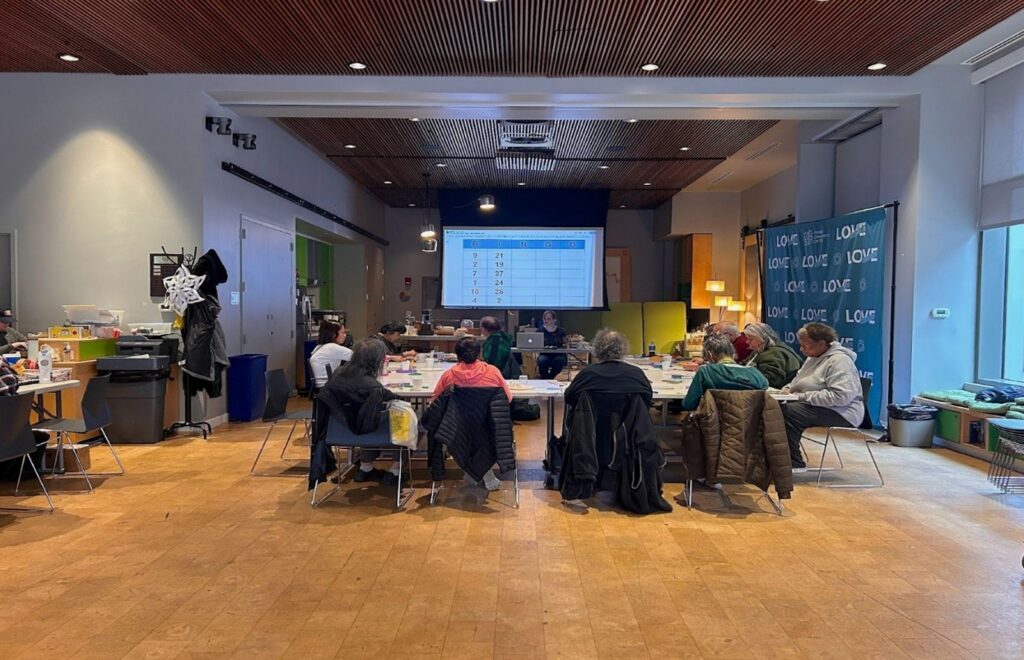Abstract:
Alcohol research in Alaska has shifted to strengths-based approaches—it will be important to learn what motivates older adults to maintain recovery rather than to relapse. Alaska Native older adults have a desire to pass on their accumulated wisdom to a younger generation through engagement and sharing of cultural activities and values, which could help to motivate and maintain sobriety. Using motivational interviewing with older adults can explore cultural motivations that support older Alaska Native adults’ desire to quit drinking, maintain recovery, and incorporate them into relapse prevention activities.
Key Words:
Alaska Natives, older adults, alcohol, treatment, relapse prevention
In recent decades, numerous studies have documented problems associated with drinking alcohol among Alaska Native (AN) peoples. However, little research has focused on developmental and cultural factors and whether or not these contribute to AN sobriety and relapse prevention (Hawkins, Cummins, and Marlatt, 2004; Mohatt et al., 2004; Moss et al., 1985). To date, little research has been conducted that builds upon these earlier works.
Between 1974 and 2016, the American Indian (AI)/AN population in the United States that was ages 65 years and older nearly tripled, from 4.8 percent to 14.1 percent of the total AI/AN population (Garrett et al., 2015). The average annual growth rate between 2010 and 2018 for Alaska’s older population (ages 60 and older) was 6 percent. Alaska’s adult population ages 60 and older is expected to increase significantly until 2030, while the number of adults ages 80 and older will continue to grow through 2045. Only 12 percent of older adults are AN, although 15 percent of the state’s total population is AN (Alaska Commission on Aging [ACOA], 2019).
With this growing population of AN older adults comes the need for age-appropriate alcohol treatment programs. These are limited in availability and to our knowledge are not available in AN communities, requiring travel to the contiguous United States for treatment centers. Rather than establishing a new recovery program, adapting current programs to meet older adult treatment needs may work.
Following Erik Erikson’s stages of human development (Erikson, 1950), this article discusses the potential role of generativity (seventh stage) in the recovery process for AN older adults. Generativity is concern for the future, a need to nurture and guide younger people, and contribute to the next generation (Erikson and Erikson, 1981). This article also will explore how this developmental stage can be integrated into Alcohol Use Disorder (AUD) treatment for AN and other AI/AN peoples to enable them to quit drinking and become role models for their families and communities.
Definition of an Alaska Native Elder
A critical distinction in later life for AN older adults, which is shared with many other AI groups, is that of being an Elder. In this article, the term “Elder” is capitalized to differentiate this from elders, meaning older adults. The role of Elder is distinguished from older adult and constitutes community recognition of the person for his or her contributions to the group, such as cultural knowledge, and the capacity for consultation and advice giving, based upon accumulated wisdom of life experience (Lewis, 2011).
Indigenous communities and family members respect their Elders, and the role of Elder is one designated by the community and family, which distinguishes those who have lived traditionally, engaged in healthy behaviors, taught others, and served as integral parts of their community and as role models (Lewis, 2014). In this way, fulfilling roles expected of you by your family and community (i.e., role socialization), is associated with becoming an Elder, or achieving Eldership, and these roles are incompatible with problem drinking or excess alcohol use. The foundation of Eldership is engaging in generative behaviors and acts.
In the construct of generativity, the developmental goal is to give back and share wisdom with others, especially those in following generations. It is essential to the role of an Elder in tribal communities. This supports the argument for incorporating this developmental stage into alcohol treatment programs to prevent relapse for AN older adults struggling with AUD. Addiction disrupts the ability of older adults to move through this stage to the next. Elders are concerned about the impact addiction has on their fellow older adults’ ability to achieve Eldership and to fulfill their roles in the family and community.
Elders want to mentor those who are transitioning into Eldership and serve as role models for younger generations on how to live a healthy and sober life. Generativity means connecting through relationships and service and feeling good about the reciprocal nature of these relationships. Addiction often creates disconnection and isolation and interferes with building healthy relationships. Trauma, including historical trauma, often is linked to using alcohol as a way to cope with grief and pain. This overreliance and excessive use can lead to an AUD.
AN community research partners and tribal leadership have repeatedly advocated for a shift from a pathology-based to a strengths-based approach in alcohol treatment and research (Mohatt et al., 2004) given the feedback and critiques of current treatment programs (e.g., 12-step programs). Rather than focusing on deficits and problem behaviors, a strengths-based approach highlights outcomes achieved by individuals and subgroups that exemplify successful treatment or deter the development of an active substance use problem (Etz et al., 2012).
A shift in focus to those who are successful in recovery contributes to our understanding of factors that prove protective from AUD (Whitesell et al., 2012). These can guide tribal communities and providers in efforts to develop interventions built upon individual, family, community, and cultural strengths. In particular, it is important to highlight cultural strengths that exist in AIAN communities. These strengths include values based in family, clan, tribal affiliation, spirituality, engagement with and support from the community, and outlets through which to pass on their experiences, wisdom, lessons, and cultural values and beliefs (Etz et al., 2012). These are referred to as Indigenous generative acts and behaviors (Lewis and Allen, 2017).
Generativity
The concept of generativity is important in most AI/AN cultures. It refers to caring for the future, or Seventh Generation, which is an indigenous phrase used to define future generations—our youth, our future. Achieving generativity would mean needing to remain sober and serve as role models, not just for our children, but for the seven generations ahead of us. But this outlook is in direct contrast to how mainstream Americans view life.
In the United States, our values emphasize independent achievement to the extent that people become involved in themselves and their successes and often neglect the responsibility of caring for others (Capuzzi, Stauffer, and O’Neil, 2016). Mainstream use of aging language focuses on elders not being a burden and successful aging as remaining independent (Rowe and Kahn, 1997). AN communities view aging as an interdependent way of life (Lewis, 2011, 2014). It is important to note that generativity is a personal resource given to others and is not used to eliminate the elder’s stress and life events (Keyes and Ryff, 1998), but instead is used to improve the quality of society.
Spicer (2001) found in his study that AI/AN interviewees understood their roles in helping others in their families and communities, which supported their desire to overcome and accept the problems they experienced in the past as a result of drinking alcohol. Elders also wish to strengthen relationships with family and community members. Burman (1997) found that AI/AN individuals in recovery wish to be role models, sharing their experiences to ensure others do not face the same challenges.
In addition to family, other sources of social support include friends and others in the wider community who provide opportunities to engage in meaningful activities and events, contributing to generative development (Beattie and Longabaugh, 1997; Moos et al., 2007). Spicer’s (2001) study explored recovery as a cultural process involving the restoration of the cultural self, concluding that drinking is incompatible with a proper way of life for AN people, and that through abstaining, people in recovery are able to restore themselves to the proper AN way of life and serve as role models for others. In this way, the narrative of their AUD and recovery becomes a tool of generativity; taking it past negative experiences and retelling them for others, highlighting lessons learned and positive outcomes of a negative event, such as receiving a DUI or being jailed for public intoxication.
A segment of the AN population struggles with AUD late into life, which prevents them from enjoying their later years, prohibits them from aging successfully and engaging in culturally generative acts. Indigenous cultural generative acts include teaching younger people cultural practices, and on a deeper level, the underlying values and worldview of their culture, as well as sharing their experiences with alcohol and recovery (Lewis and Allen, 2017). We can learn from those who wish to share their lived experiences of recovery and sobriety (Burman, 1997).
Motivational Interviewing
Many AN older adults have undergone shifts in identity and battle with addiction and other mental health conditions, preventing them from fulfilling their role of “Elder” or reaching the developmental stage of contributing and serving as role models for others (Lewis and Allen, 2017). A majority of Elders have a strong desire to teach their grandchildren, as well as others in their community, and addiction has been a barrier. Applying these motivations (the desire to be an Elder and teach), to alcohol treatment and relapse prevention programs is one innovative approach being explored in Alaska. Tapping into this generative desire of AN Elders and working with them to explore their motivations to quit drinking via replacing drinking behaviors, feelings, and thoughts with culturally meaningful activities and behaviors is a promising practice (Lewis and Allen, 2017). We can work collaboratively with Elders to develop motivations for recovery, support them to fulfill this stage of psychosocial development, and enable them to become role models, teachers, leaders, and grandparents; all which are incompatible with alcohol misuse (Lewis and Allen, 2017).
Motivational Interviewing (Miller, 1983) is an appropriate treatment method because of its focus on exploring the intrinsic motivating factors behind quitting drinking and remaining sober. This method recognizes and accepts the fact that clients who need to make changes in their lives approach counseling at different levels of readiness to change their behaviors. Generative behaviors and actions can serve as strategies that would contribute to an AUD treatment program. Adults give meaning to the unique patterns of inner desire, cultural demand, generative concern, belief commitment, and generative action in their lives (de St. Aubin and McAdams, 1995). They do this by constructing a narrative of generativity, which becomes part of a larger life narration, or life story, which makes up a person’s identity. And it becomes their self-defining life story that can include recovery.
Can applying this idea to the addiction field help other individuals out of addiction? Many AI/AN people share their stories of recovery to help prevent others from having similar experiences. Also, sharing their stories empowers them to continue on their own journey of recovery, as well as instill hope and optimism for the storyteller and the listener (Vogel-Scibilia et al., 2009). Through telling their stories, they are able to continue to revise them as they learn more about their experiences, continually revising to emphasize a strengths-based perspective of recovery.
Conclusion
The increasing awareness of alcohol problems in AN communities and this shift from negative to positive outlooks on sobriety and relapse prevention highlight the strengths and resilience within our tribal communities. Alcohol abstinence rates are higher for AI/AN than for other racial and ethnic minority groups, pointing to an important source of resilience (Kulis et al., 2012). There is a need for continued work developing research strategies and methodologies to address the unique context of conducting research with AN people and communities, as well as a need for increased attention to strengths-based and community-oriented approaches to substance abuse research (Etz et al., 2012).
This article shifts the focus of alcohol literature from the failures of older adults in their recoveries to the strengths and resilience that have enabled them to quit or abstain from drinking to serve as role models for others. This article provides us with a better understanding of what it means to live a better life and establishes a path to age successfully, live the good life (Quintero, 2000), or live “life as it was meant to be lived” (Mohatt, 2007). Such findings regarding what AN older adults consider effective or meaningful for them can influence future research in understanding what motivated them to quit problem drinking and what protects their sobriety. This knowledge can guide development of culture-specific alcohol treatment approaches, and more broadly, AUD prevention strategies.
This heightened consciousness, the spirit of self-determination, and the desire to improve one’s health and well-being is a positive force for AN sobriety movements and essential to rebuilding healthy families and communities. Treatment and continuing care need to focus more directly on strengthening the protective resources that promote abstinence and recovery (Moos, 2007).
Implications for Research and Practice
This article may be the first to apply Erikson’s seventh stage of development to relapse prevention services. And it contributes to the growing literature suggesting AN alcohol treatment research needs to expand from a focus solely on recovery from alcohol use behaviors to other areas of the individual’s life, including their respective developmental stages, and their roles in family and community life (Etz et al., 2012).
Further research that could guide treatment approaches focused more directly on strengthening protective resources promoting AN recovery is needed (Moos et al., 2007). However, current findings suggest being engaged in meaningful and worthwhile activities with family, community, spirituality, and culture are important for AN Elders and can serve as protective factors against AUD and relapse.
Jordan P. Lewis, PhD, is a professor at the University of Minnesota Medical School, Duluth campus, and Memory Keepers Medical Discovery Team.
References
Alaska Commission on Aging. 2019. The Alaska State Plan for Senior Services, FFY2020-2023. Juneau, AK: Alaska Department of Health and Social Services.
Aubin, Ed de St, and Dan P. McAdams. 1995. “The Relations of Generative Concern and Generative Action to Personality Traits, Satisfaction/Happiness with Life, and Ego Development.” Journal of Adult Development 2(2): 99-112.
Beattie, M. C., and Longabaugh, R. 1997. “Interpersonal Factors and Post‐treatment Drinking and Subjective Wellbeing.” Addiction 92(11): 1507-21.
Burman, S. 1997. “The Challenge of Sobriety: Natural Recovery Without Treatment and Self-help Groups.” Journal of Substance Abuse 9: 41-61.
Capuzzi, D., Stauffer, M.D., and O’Neil, T. 2016. “Theories of Human Development.” Human Growth and Development Across the Lifespan: Applications for Counselors 25-54.
Erikson, E. H. 1950. Childhood and Society. New York: WW Norton & Company.
Erikson, E., and Erikson, J. 1981. “On Generativity and Identity: From a Conversation with Erik and Joan Erikson.” Harvard Educational Review 51(2): 249-69.
Etz, K. E., et al. 2012. “Advancing American Indian and Alaska Native Substance Abuse Research: Current Science and Future Directions.” The American Journal of Drug and Alcohol Abuse 38(5): 372-5.
Garrett, M. D., et al. 2015. “Mental Health Disorders Among an Invisible Minority: Depression and Dementia Among American Indian and Alaska Native elders.” The Gerontologist 55(2): 227-36.
Hawkins, E. H., Cummins, L. H., and Marlatt, G. A. 2004. “Preventing Substance Abuse in American Indian and Alaska Native Youth: Promising Strategies for Healthier Communities.” Psychological Bulletin 130(2): 304-23.
Keyes, C. L. M., and Ryff, C. D. 1998. “Generativity in Adult Lives: Social Structural Contours and Quality of Life Consequences.” In D. P. McAdams and E. de St. Aubin, eds., Generativity and Adult Development: How and Why We Care for the Next Generation 227-263. American Psychological Association. doi.org/10.1037/10288-007.
Kulis, S., et al. 2012. “Spirituality and Religion: Intertwined Protective Factors for Substance Use Among Urban American Indian Youth.” The American Journal of Drug and Alcohol Abuse 38(5): 444-9.
Lewis, J. P. 2014. “The Role of the Social Engagement in the Definition of Successful Ageing Among Alaska Native Elders in Bristol Bay, Alaska.” Psychology and Developing Societies 26(2): 263-90.
Lewis, J. P. 2011. “Successful Aging Through the Eyes of Alaska Native Elders. What It Means to Be an Elder in Bristol Bay, Alaska.” The Gerontologist 51(): 5409.
Lewis, J. P., and Allen, J. 2017. “Alaska Native Elders in Recovery: Linkages Between Indigenous Cultural Generativity and Sobriety to Promote Successful Aging.” Journal of Cross-Cultural Gerontology 32(2): 209-22.
Miller, W. R. 1983. “Motivational Interviewing with Problem Drinkers.” Behavioural and Cognitive Psychotherapy 11(2): 147-17.
Mohatt, G. V., et al. 2004. “Unheard Alaska: Culturally Anchored Participatory Action Research on Sobriety with Alaska Natives.” American Journal of Community Psychology 33(3-4): 263-73.
Mohatt, G,. V., et al. 2007. “Risk, Resilience, and Natural Recovery: A Model of Recovery from Alcohol Abuse for Alaska Natives.” Addiction 103(2): 205-15.
Moos, R. H. 2007. “Theory-based Processes that Promote the Remission of Substance Use Disorders.” Clinical Psychology Review 27: 537-51.
Moss, F., et al. 1985. “Sobriety and American Indian Problem Drinkers.” Alcoholism Treatment Quarterly 2(2): 81-96.
Quintero, G. 2000. “ ‘The Lizard in the Green Bottle:’ ‘Aging Out’ of Problem Drinking Among Navajo Men.” Social Science and Medicine 51: 1031-045.
Rowe, J. W., and Kahn, R. L. 1997. “Successful Aging.” The Gerontologist 37(4): 433-40.
Spicer, P. 2001. “Culture and the Restoration of Self Among Former American Indian Drinkers.” Social Science & Medicine 53(2): 227-40.
Vogel-Scibilia, S,. E., et al. 2009. “The Recovery Process Utilizing Erikson’s Stages of Human Development.” Community Mental Health Journal 45(6): 405.
Whitesell, N. R., et al. 2012. “Epidemiology and Etiology of Substance Use Among American Indians and Alaska Natives: Risk, Protection, and Implications for Prevention.” The American Journal of Drug and Alcohol Abuse 38(5): 376-82.













